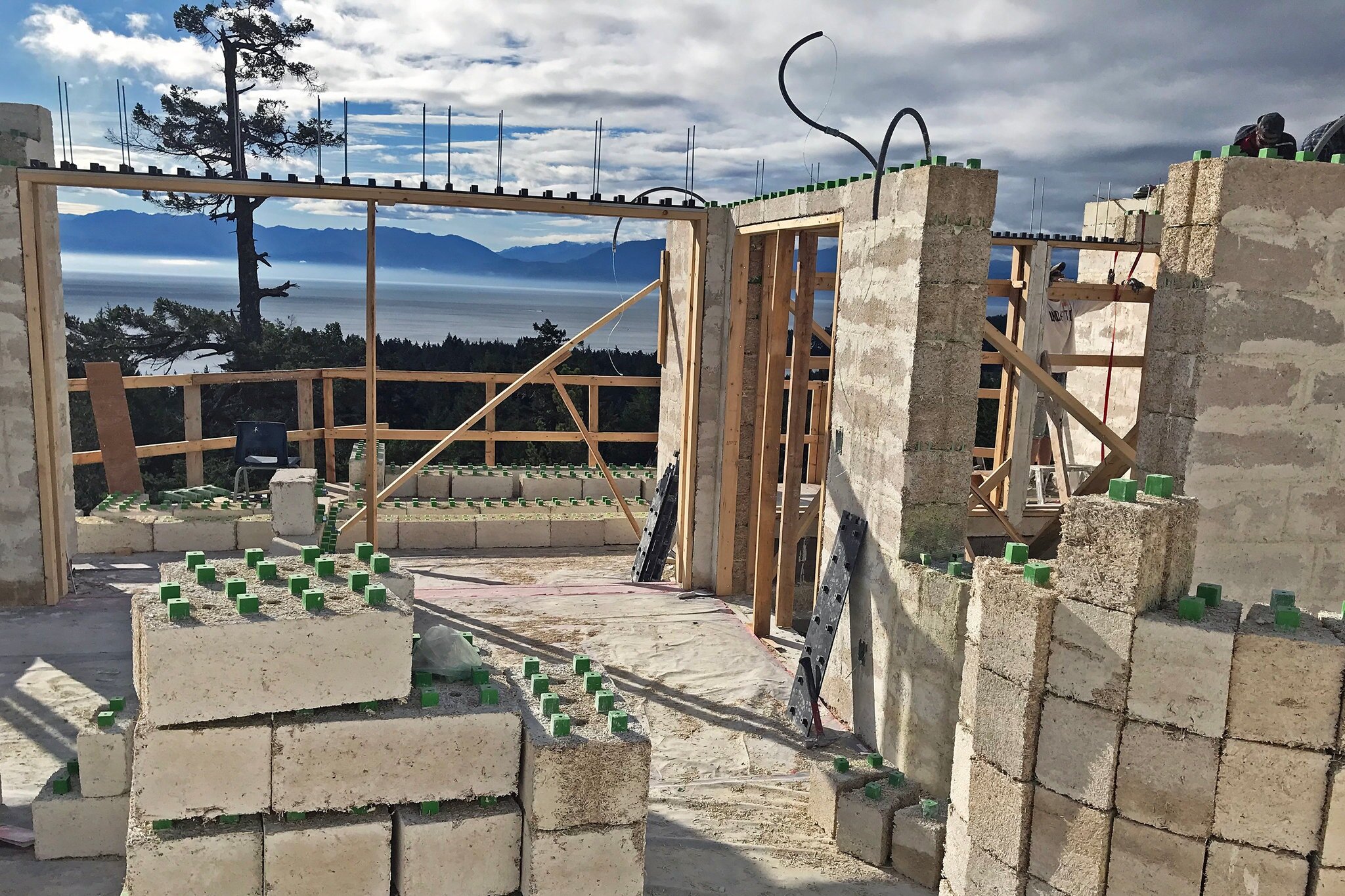The History
photo courtesy of Harmlesss Home
Hemp is one of the oldest, if not the oldest known source of plant fibers for woven goods. Beyond providing grain food and fiber for sail cloth, clothing, and much more, hemp is an excellent building material. Hempcrete, a type of concrete made with parts of the hemp plant, has been used in building for more then a thousand years. In the book “The Emperor Wears No Clothes,” the author cites the example of a 1500 year old bridge in France made with hempcrete.
Hemp goes beyond building ancient bridges. Hempcrete has well documented insulation, fire resistant, and acoustic properties. With a seed to harvest time of less than three months, hemp can outcompete trees for building material volume. Used as an insulation, it will continue to absorb carbon dioxide, making it the ideal alternative to wasteful forestry practices.
The Process
Cannabis Sativa, the species of plant that hemp is derived from, is a hurd type plant. The stalk of the plant has a fibrous and extremely strong exterior and a wood-like inner core. This is the bast and hurd. Other examples of hurd type plants are flax, jute, and kenaf. From the hurd’s wood-like inner core, a natural concrete aggregate is made.
The process of actually making hempcrete is very simple. All one would do is mix cement, which is a mixture of lime and other minerals, with water and add the hemp aggregate. Then you pour the mix into your foundation or molds, gently compressing the hempcrete as you pour.
Bonner, J. (2020, February 06). Learn How To Make Your Own Hempcrete. Retrieved August 26, 2020, from https://www.theextract.co.uk/lifestyle/sustainability/diy-hempcrete-wall/
Herer, J., Cabarga, L., & McCormick, T. (2010). Jack Herer’s The emperor wears no clothes. Austin, TX: Ah Ha Pub.
Paridah, M., Basher, A., SaifulAzry, S., & Ahmed, Z. (2011). Retting Process Of Some Bast Plant Fibres And Its Effect On Fibre Quality: A Review. BioResources, 6(4), 5260-5281.


